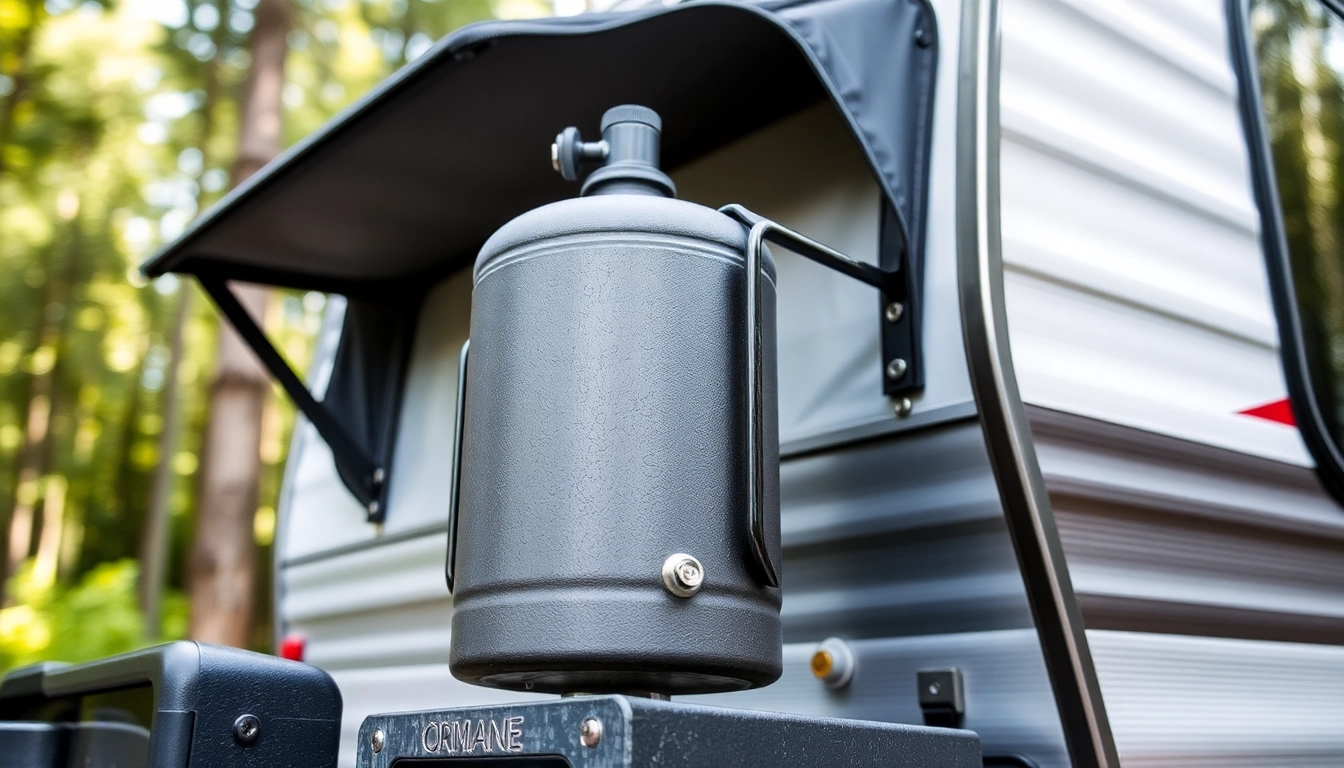Understanding Gas Bottle Holders
Gas bottle holders are essential tools designed to secure gas cylinders in various settings, from commercial to residential environments. These holders play a crucial role in ensuring safety, convenience, and efficient storage of gas bottles. Gas bottle holders come in different designs and materials, catering to a wide range of requirements. In the following sections, we will delve deeper into what a gas bottle holder is, its benefits, and the types available on the market.
What is a Gas Bottle Holder?
A gas bottle holder is a device designed to secure gas cylinders in place, preventing them from falling or rolling, which can lead to dangerous accidents. These holders are typically made from metal or durable plastic and can be mounted on walls, shelves, or vehicles. Gas bottle holders are utilized in various industries, including construction, medical, catering, and even for recreational use, such as in camping and outdoor activities.
Benefits of Using a Gas Bottle Holder
- Enhanced Safety: One of the primary reasons for using a gas bottle holder is safety. By securing the cylinder, the risk of spills, leaks, and accidents is significantly reduced.
- Organization: Gas bottle holders help keep your space organized and tidy. Rather than having loose cylinders lying around, using a holder can streamline your storage solutions.
- Accessibility: With a designated holder, it’s easier to access and transport gas cylinders when needed.
- Durability: Most gas bottle holders are designed to withstand the elements, making them suitable for both indoor and outdoor use.
Different Types of Gas Bottle Holders Available
Gas bottle holders come in various designs, tailored to specific needs. The main types include:
- Wall-Mounted Holders: These holders are installed on walls to store gas bottles safely. They are ideal for compact spaces and can hold bottles at different heights.
- Portable Holders: Designed for easy mobility, portable holders allow users to move gas cylinders as needed, such as when camping or for outdoor events.
- Vehicle Mounts: These holders are specifically made to secure gas bottles in cars, trucks, or recreational vehicles. They often feature adjustable straps for securing various sizes of cylinders.
- Fixed Racks: Fixed racks can hold multiple gas bottles securely, often used in commercial settings or industries requiring several cylinders.
How to Select a Gas Bottle Holder
Choosing the right gas bottle holder is crucial for ensuring safety and efficiency. Here are some key factors to consider when selecting a holder:
Key Features to Look For
When selecting a gas bottle holder, consider the following features:
- Security Mechanisms: Look for holders with robust security features, such as locking mechanisms, to prevent unauthorized access and accidental tipping.
- Size Adjustability: Many gas bottles come in various sizes and shapes. Choose a holder that can accommodate multiple sizes or can be adjusted for different dimensions.
- Material Quality: Opt for holders made from high-quality materials like steel or heavy-duty plastic that can withstand wear and tear.
- Ease of Installation: Some holders require specific mounting hardware or tools. Choose a holder that can be easily installed with basic tools.
Size and Compatibility Considerations
The size of the gas bottle holder is paramount. Make sure to measure the diameter and height of your gas cylinders to ensure a proper fit. The holder should not only accommodate the size but also provide enough space around the bottle for ventilation and safety measures. Compatibility with your storage area is also essential; ensure that the holder fits in your designated space without blocking access or being a hazard.
Material Durability and Safety Standards
Durability is critical when considering the longevity and reliability of a gas bottle holder. Look for products that meet industry safety standards and are constructed from materials resistant to rust, corrosion, and impact damage. This is particularly important for holders that will be used outdoors or in high-demand environments. Regularly checking for safety compliance can also prevent potential hazards.
Installation and Usage Guidelines
Proper installation and usage of gas bottle holders can significantly enhance their effectiveness and safety. Here’s a step-by-step guide.
Steps for Proper Installation
- Select the Installation Area: Choose a dry, well-ventilated area for installation, away from heat sources or flammable materials.
- Gather Tools: Ensure you have all tools needed for installation, which may include screws, anchors, a drill, and a level.
- Secure the Holder: Follow the manufacturer’s instructions for securing the holder. Use anchors for added stability if mounting on drywall or similar materials.
- Double-Check Alignment: Ensure the holder is level and securely fastened before placing the gas bottle inside.
Best Practices for Safe Use
- Always Store Upright: Gas bottles must be stored upright to prevent leaks.
- Adequate Ventilation: Ensure adequate ventilation in the storage area to avoid gases accumulating.
- Regular Inspections: Regularly inspect both the gas bottle and the holder for signs of wear or damage.
Common Mistakes to Avoid
Common oversights can lead to unsafe situations. Avoid these mistakes:
- Ignoring Manufacturer Guidelines: Always adhere to the installation and use guidelines provided by the manufacturer.
- Overloading: Do not exceed the recommended weight or size limit of your gas bottle holder.
- Neglecting Maintenance: Regular maintenance and cleaning can prolong the life of your holder and maintain safety.
Maintaining Your Gas Bottle Holder
Regular maintenance of your gas bottle holder will ensure its longevity and effectiveness in keeping your gas bottles safe. Here are some essential practices for maintaining your holder.
Cleaning and Care Tips
To care for your gas bottle holder, consider the following:
- Regular Cleaning: Wipe down the holder regularly with a damp cloth to remove dirt and grime. Use mild soap if necessary.
- Check for Rust: For metal holders, routinely check for any signs of rust and treat them to prevent corrosion.
- Protective Coating: If the holder is often exposed to outdoor elements, consider applying a protective coating to enhance longevity.
Inspection for Wear and Tear
Inspect your gas bottle holder frequently for any damage that may jeopardize safety:
- Check Fasteners: Regularly tighten screws and bolts to ensure nothing has come loose from the holding plate.
- Look for Cracks: Inspect plastic holders for any cracks and replace them if found.
- Assess Stability: Make sure the holder remains stable and does not wobble or lean after installation.
Updating or Replacing Your Holder
Over time, it may be necessary to update or replace your gas bottle holder:
- Evaluate Needs: If your gas storage needs change, assess whether your current holder still meets those requirements.
- Consider Upgrading: Look for newer designs that offer better safety features and ease of use.
- Safe Disposal: When disposing of an old gas bottle holder, ensure adherence to any local laws regarding waste disposal, especially if the holder contains hazardous materials.
Frequently Asked Questions About Gas Bottle Holders
As gas bottle holders are essential for safety and efficiency, users may have common questions regarding their use, installation, and safety. Here are answers to frequently asked questions.
How Secure Should a Gas Bottle Holder Be?
A gas bottle holder should be secure enough to keep the bottle stable without any movement. It must be capable of withstanding external forces, such as wind or accidental bumping, particularly in outdoor settings. Regular inspections ensure that the holder continues to provide adequate security over time.
Can I Use a Gas Bottle Holder Outdoors?
Yes, many gas bottle holders are designed specifically for outdoor use. However, ensure that the material is resistant to corrosion and environmental conditions. Look for features that mitigate UV damage and rust.
What is the Best Way to Store Gas Cylinders?
The best way to store gas cylinders is horizontally on a gas bottle holder or vertically secured to a wall, ensuring that they remain upright in a well-ventilated area away from heat sources. It is also advisable to keep the cylinders in a clearly marked area designated for gas storage, preventing any confusion or risk.


